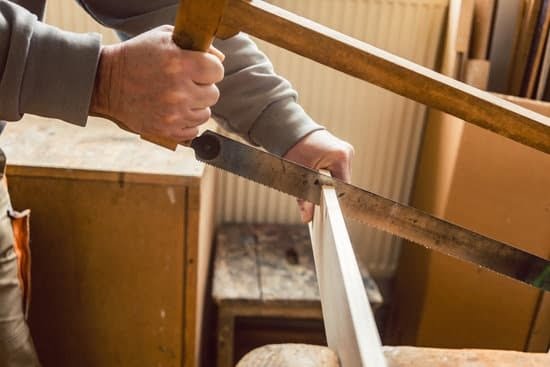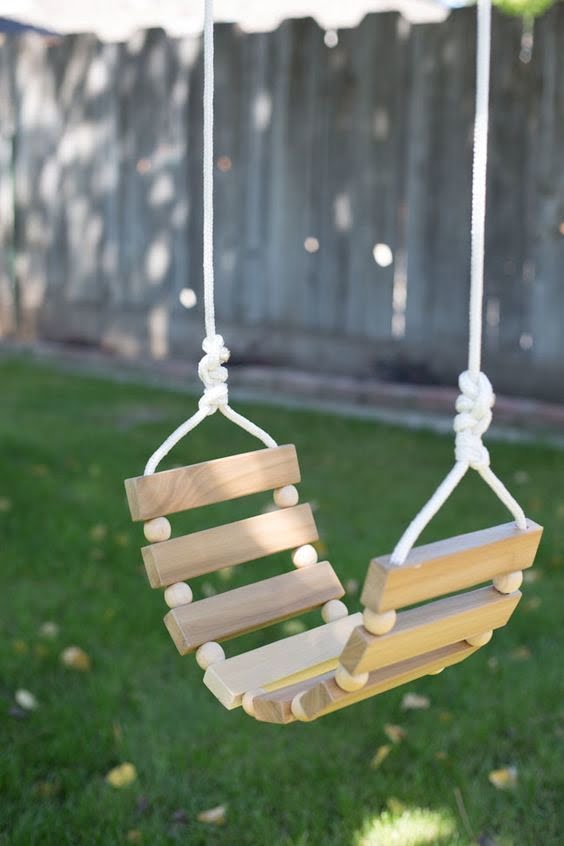Woodworking hand planers play a crucial role in shaping and refining woodwork projects with precision and control. These versatile tools have been a staple in woodworkers’ toolkits for centuries, allowing craftsmen to achieve smooth surfaces and accurate measurements. From traditional hand planes to modern electric planers, the evolution of woodworking hand planers has revolutionized the craft, making it more efficient and accessible.
In this comprehensive guide, we will delve into the significance of woodworking hand planers in woodworking projects. We will explore the history of hand planers, detailing their evolution from manual tools to power-driven machines. Additionally, we will uncover the different types of woodworking hand planers available in the market today, including bench planes, block planes, and specialty planes, each designed for specific tasks and projects.
Whether you are a seasoned woodworker or a DIY enthusiast looking to enhance your skills, understanding how to choose the right woodworking hand planer is essential. Factors such as project requirements, budget constraints, and personal preferences all play a role in selecting the perfect hand planer for your needs. Stay tuned as we provide valuable insights on how to make an informed decision when investing in this indispensable tool for your workshop.
History of Woodworking Hand Planers
Woodworking hand planers have a rich history that dates back centuries, evolving from traditional hand planes to the more modern electric planers we see today. Understanding the origins of these tools can provide insight into their development and importance in woodworking practices. Here is a brief overview of the history of woodworking hand planers:
- Traditional Hand Planes: The earliest known hand planes date back to ancient civilizations, where craftsmen used simple tools made of wood or metal to shape and smooth wooden surfaces. These early hand planes required skilled craftsmanship to operate efficiently, relying on the manual dexterity of the user to achieve precise results.
- Transitional Period: As woodworking techniques advanced during the Renaissance period, so did the design and functionality of hand planes. Innovations such as adjustable blades and ergonomic handles were introduced, making it easier for woodworkers to manipulate and control the tool effectively.
- Modern Electric Planers: With the Industrial Revolution came significant advancements in woodworking technology, including the invention of electric planers. These power tools revolutionized the way woodworkers approached surface preparation and material removal, offering speed and efficiency that traditional hand planes could not match.
Despite the availability of electric planers, many woodworking enthusiasts still value the craftsmanship and precision achieved through using a traditional woodworking hand planer. The tactile feedback and control provided by a hand plane cannot be replicated by a machine, making it an essential tool in any woodworker’s arsenal.
Types of Woodworking Hand Planers
Woodworking hand planers come in various types, each designed to serve specific purposes and cater to different woodworking needs. Understanding the differences between these types can help woodworkers choose the right tool for their projects. The three main types of woodworking hand planers commonly found in the market are bench planes, block planes, and specialty planes.
Bench Planes
Bench planes are among the most versatile and widely used hand planers in woodworking. They are typically longer in size which allows for better control and precision when flattening large surfaces or shaping pieces of wood. Bench planes are categorized based on their size, with smaller numbers indicating longer planes suitable for heavier tasks like leveling wooden boards, while larger numbers represent shorter planes suitable for finer work like smoothing surfaces.
Block Planes
Block planes are compact and lightweight hand planers that excel at trimming end grain, chamfering edges, smoothing small surfaces, and fitting joints. Their low angle blade design makes them particularly effective for reducing tear-out on delicate woods or achieving a clean cut on end grain. Block planes are a handy addition to any woodworker’s toolkit due to their portability and versatility in performing various tasks with ease.
Specialty Planes
Specialty planes encompass a wide range of hand planers that are tailored to specific functions or highly specialized tasks. Some examples include rabbet planes for cutting precise rabbets along the edge of a board, shoulder planes for trimming shoulders of joints accurately, and spokeshaves for shaping curved surfaces effortlessly. While not essential for every project, specialty planes can greatly enhance woodworking capabilities by providing unique features that standard bench or block planes may lack.
By familiarizing themselves with the different types of woodworking hand planers available in the market, woodworkers can make informed decisions when selecting the most suitable tool for their projects based on requirements such as precision, versatility, and efficiency. Whether it’s using a bench plane for smoothing large surfaces or reaching for a block plane to refine intricate details, having the right type of hand planer can significantly impact the quality and outcome of woodworking endeavors.
How to Choose the Right Woodworking Hand Planer
When it comes to selecting the right woodworking hand planer for your projects, there are several key factors to consider. The type of hand planer you choose can greatly impact the quality and efficiency of your woodworking tasks. To ensure that you are making the best choice for your needs, here are some important factors to keep in mind:
- Project Requirements: Consider the scope and scale of your woodworking projects. For larger projects that require more precision and control, a bench plane might be more suitable. On the other hand, smaller projects or detail work may benefit from a block plane or specialty plane.
- Budget: Hand planers can vary significantly in price depending on their quality, brand, and features. It is essential to establish a budget range that you are comfortable with before beginning your search. Keep in mind that investing in a higher-quality hand planer can often lead to better results and durability in the long run.
- Ergonomics: Comfort is an important aspect when using a hand planer for extended periods. Look for a model that has ergonomic handles and balanced weight distribution to prevent fatigue and strain during use.
Taking these factors into consideration will help you narrow down your options and choose a woodworking hand planer that meets both your project requirements and budget constraints. By making an informed decision, you can ensure better results and efficiency in your woodworking endeavors.
Remember, a woodworking hand planer is an essential tool for achieving smooth surfaces and precise finishes in woodwork. Whether you are a seasoned professional or a novice enthusiast, selecting the right hand planer is crucial for success in your projects involving wood crafting.
Woodworking Hand Planer Techniques
Woodworking hand planers are essential tools for any woodworker looking to achieve smooth and precise results in their projects. Whether you are a beginner or an experienced craftsman, mastering the techniques of using a hand planer can elevate the quality of your woodworking creations. One of the key benefits of using a woodworking hand planer is the level of control it provides, allowing you to adjust and refine the surface of your wood with utmost precision.
To start using a woodworking hand planer effectively, it is crucial to ensure that the blade is sharp and properly adjusted. A dull blade can result in rough cuts and splintered surfaces, affecting the overall finish of your piece. Sharpening the blade regularly and adjusting it to the correct depth will ensure smooth operation and optimal cutting performance. Additionally, maintaining a consistent angle while planing will help you achieve uniform thickness and smoothness across the wood surface.
When using a woodworking hand planer, always work with the grain of the wood to prevent tear-out and achieve clean cuts. Begin by securing the wood firmly in place on a stable work surface and position the hand planer at a slight angle to start removing thin shavings.
Gradually increase pressure as needed, but avoid forcing the tool as it can lead to uneven surfaces or gouges. Practice makes perfect when it comes to mastering hand planing techniques, so take your time to develop a steady rhythm and technique that works best for you.
| Advantages | Details |
|---|---|
| Precision Control | Allows for precise adjustments and refinements on wood surfaces |
| Smooth Finish | Achieve smooth surfaces with sharp blades and consistent technique |
| Tear-Out Prevention | Working with the grain helps avoid splinters and tear-out on wood pieces |
Maintenance and Care Tips for Woodworking Hand Planers
Woodworking hand planers are essential tools for any woodworker, and proper maintenance is crucial to ensure their longevity and optimal performance. One important aspect of caring for a hand planer is keeping it clean. After each use, it is recommended to remove any dust, shavings, or debris that may have accumulated on the tool.
A brush or compressed air can be used to clean out the nooks and crannies of the planer. This not only keeps the tool in good working condition but also prevents buildup that can affect its performance.
Sharpening the blade of a woodworking hand planer is another key maintenance task. A sharp blade is essential for achieving smooth and precise results in woodworking projects. The frequency of sharpening will depend on how often the hand planer is used, but it’s generally a good practice to touch up the blade regularly.
There are different methods for sharpening blades, including using sharpening stones or honing guides. Keeping the blade sharp not only improves the quality of work but also reduces strain on the user and prolongs the life of the tool.
When it comes to storing woodworking hand planers, it’s important to protect them from environmental factors that can cause rust or damage. Hand planes should be stored in a dry area away from moisture to prevent corrosion.
Some woodworkers prefer to coat the metal parts of the hand planer with a thin layer of oil before storage as an extra precaution against rust. Additionally, storing hand planes in a case or dedicated rack can help prevent accidental damage and keep them organized for easy access when needed.
| Maintenance Tips | Care Tips |
|---|---|
| Regular cleaning after each use | Avoid exposure to moisture |
| Frequent blade sharpening | Coat metal parts with oil before storage |
| Store in dry area away from moisture | Use case or rack for storage |
Advantages of Using a Woodworking Hand Planer
Woodworking hand planers offer a multitude of advantages over their machine counterparts, with one of the primary benefits being the level of control and precision they provide. Unlike electric planers that may sometimes remove more material than intended, hand planers allow for meticulous adjustments and fine-tuning.
This enhanced control is particularly advantageous when working on intricate woodworking projects that require attention to detail and accuracy. By using a woodworking hand planer, craftsmen can achieve smoother finishes and precise measurements with ease.
Another significant advantage of utilizing a woodworking hand planer is the ability to work on smaller surfaces or tight spaces where machine planers may not be able to reach. Hand planes are versatile tools that enable woodworkers to maneuver around corners, edges, and uneven surfaces effortlessly.
This flexibility in navigation allows artisans to tackle a broader range of woodworking projects effectively, from large-scale furniture pieces to delicate trim work. Additionally, the hands-on approach offered by hand planing enhances the craftsmanship involved in creating unique woodwork designs.
Furthermore, using a woodworking hand planer provides woodworkers with a deeper connection to their craft and materials. The tactile feedback received from manually guiding a hand plane across the wood surface allows artisans to develop a better understanding of the wood’s characteristics and grain patterns.
This intimate interaction fosters creativity and innovation in woodworking projects as craftsmen can tailor their techniques based on the specific properties of each piece of wood. Ultimately, employing a hand planer not only enhances the overall quality of finished products but also nurtures an appreciation for the artistry and skill required in traditional woodworking practices.
Woodworking Hand Planer Project Ideas
Wooden Coasters
One fun and easy project that can be accomplished using a woodworking hand planer is creating wooden coasters. To start, select a hardwood of your choice and use the hand planer to smooth out the surface and give it a polished look. Then, cut the wood into small, even squares or circles using a saw.
Next, use the hand planer to round off the edges for a more refined finish. Finally, sand down any rough areas and apply a protective finish to complete your custom wooden coasters.
Picture Frames
Another great DIY project idea with a woodworking hand planer is making picture frames. Choose your preferred type of wood and use the hand planer to create clean, straight edges for assembling the frame.
Cut the wood pieces to size and then use the hand planer to chamfer or bevel the edges for added detail. Once assembled, you can further personalize your picture frames by using the hand planer to create intricate designs or patterns on the surface before finishing it with stain or paint.
Wooden Serving Tray
For those looking for a practical woodworking project, consider making a wooden serving tray using a woodworking hand planer. Start by selecting a sturdy hardwood like oak or maple and using the hand planer to flatten and smooth out the surface of the wood.
Cut the wood into an appropriate size for your desired tray dimensions and then shape the edges with the hand planer for a sleek look. Add handles or decorative elements if desired before applying a food-safe finish to protect and enhance the natural beauty of the wood.
With these creative project ideas, you can see how versatile and essential a woodworking hand planer can be in bringing your DIY vision to life with precision and quality craftsmanship. Whether you are a seasoned woodworker or just starting out, exploring different projects with a hand planer will not only improve your skills but also showcase the endless possibilities this tool offers in woodworking endeavors.
Conclusion
In conclusion, the woodworking hand planer stands out as a versatile and essential tool in any woodworker’s arsenal. From its traditional roots to the modern advancements in electric planers, the hand planer has evolved to cater to various project requirements and skill levels. With types ranging from bench planes to specialty planes, woodworkers have a wide array of options to choose from based on their specific needs.
When selecting the right woodworking hand planer, factors such as project requirements and budget play a crucial role. Understanding how to properly use a hand planer through techniques like adjusting blade depth and maintaining proper sharpening is key to achieving smooth and precise results. By incorporating regular maintenance and care tips into one’s woodworking routine, the longevity and performance of hand planers can be maximized.
The advantages of using a woodworking hand planer over machine planing are clear – better control, precision, and attention to detail. This tool allows woodworkers to unleash their creativity through various DIY projects that showcase the versatility and utility of the hand planer. In essence, investing in a quality woodworking hand planer is not just about acquiring a tool but gaining a partner in craftsmanship that opens up endless possibilities for creating beautifully crafted wooden pieces.
Frequently Asked Questions
What Is the Best Hand Wood Planer to Buy?
The best hand wood planer to buy would depend on your specific needs and preferences. Some popular options include brands like Stanley, DEWALT, and Bosch. Look for features like adjustable blades, comfortable grips, and durable construction.
What Is the Best Wood for a Hand Planer?
When choosing the best wood for a hand planer, it’s important to consider the hardness and grain of the wood. Hardwoods like maple, cherry, and walnut are commonly recommended due to their durability and smooth planing qualities. Softwoods like pine can also be good options for beginners.
Are Hand Planers Any Good?
Hand planers are definitely good tools to have in your woodworking arsenal. They offer precision and control when shaping or smoothing wood surfaces. While they require more manual effort compared to power tools, hand planers can provide a satisfying hands-on experience and great results with practice.

Hi everyone! I’m a woodworker and blogger, and this is my woodworking blog. In my blog, I share tips and tricks for woodworkers of all skill levels, as well as project ideas that you can try yourself.





